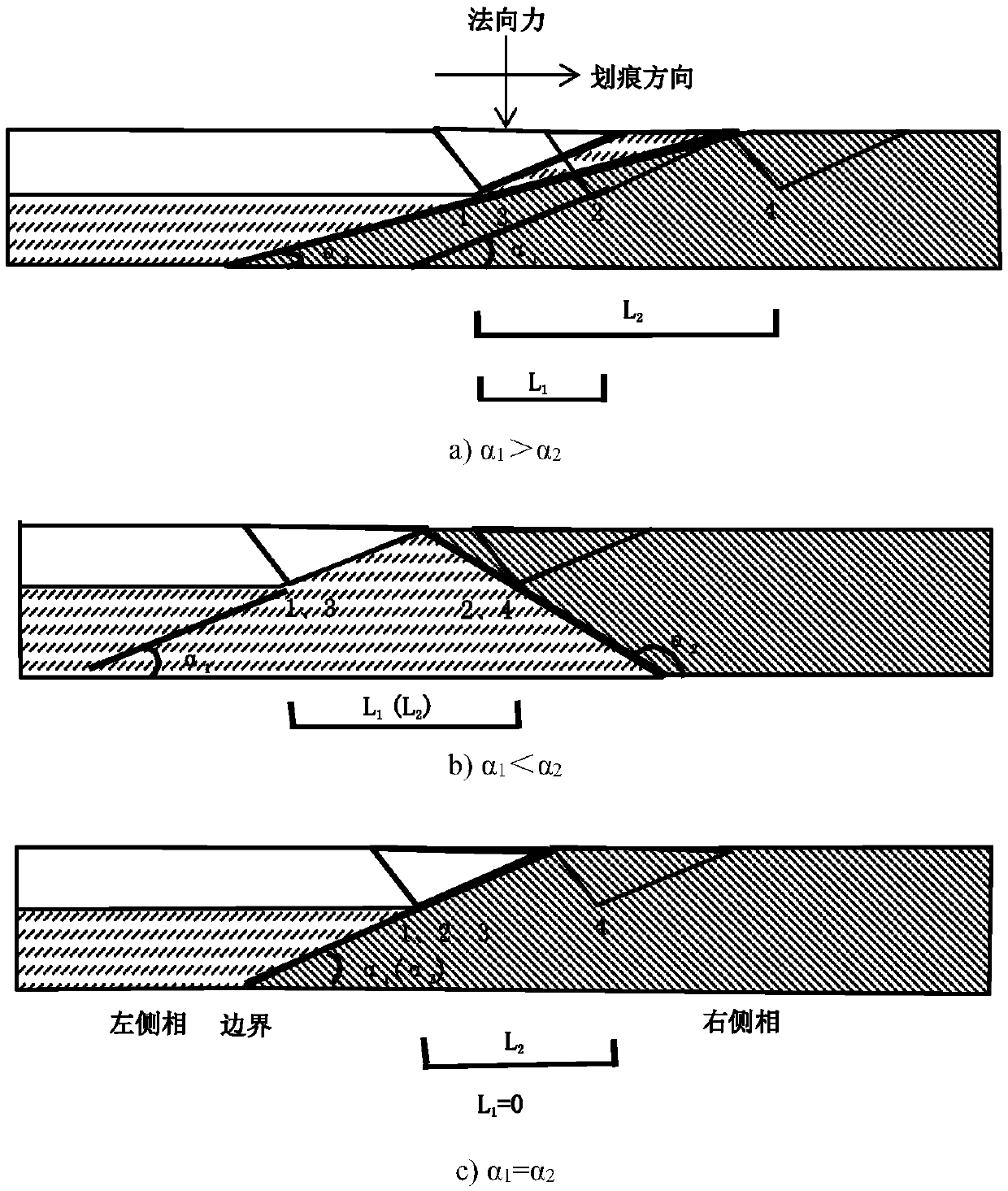Method for testing performances of all components in heterogeneous material based on nano-scratch technology
A technology of non-uniform materials and testing methods, applied in the direction of analyzing materials, testing material hardness, measuring devices, etc., can solve the problems of substrate effect, difficult analysis, uncertain measurement results, etc., to avoid the influence of interface phase, The effect of improving the accuracy of the experiment
- Summary
- Abstract
- Description
- Claims
- Application Information
AI Technical Summary
Problems solved by technology
Method used
Image
Examples
example 1
[0026] Example 1 measures the intermetallic compound Ni 3 Elastic properties of Al and Ni, Al
[0027] Apply the performance testing technology of various components of heterogeneous materials based on the nano-scratch method to obtain the intermetallic compound Ni without the influence of the peripheral effect 3 Al and Ni, Al elastic properties,
[0028] First, the Ni-Al welding material to be tested was inlaid, ground, and polished to make samples for nanoindentation and nanoscratch. Localization of typical Ni-Ni through the optical microscope of the nanoindenter 3 Al rectangular mixed area 200 μm x 200 μm. The P value of the feedback adjustment is 10000, the I value is 500, and the D value is 1000. The change speed of the force during the adjustment is ±0.2 mN / s. Set the number of scratches to 11 with an interval of 20 microns. The pre-pressing depth is 1.5 microns, the pressing speed is 0.2 microns / second, and the scratching speed is 4 microns / second. With the bottom...
example 2
[0030] Example 2 measures the elastic properties of short carbon fiber and PMMA in short carbon fiber reinforced polymethyl methacrylate (PMMA)
[0031]The performance testing technology of each component of the heterogeneous material based on the nano-scratch method is used to obtain the PMMA medium-short carbon fiber and the elastic performance of PMMA without the influence of the peripheral effect. The measured short carbon fiber reinforced PMMA is inlaid, ground and polished to make samples for nano-indentation and nano-scratch. A typical short carbon fiber-PMMA rectangular mixed region 200 μm × 200 μm was located by the optical microscope attached to the nanoindenter. The P value of the feedback adjustment is 50000, the I value is 100, and the D value is 5000, and the change speed of the force during the adjustment is ±0.5 mN / s. Set the number of scratches to 11 with an interval of 20 microns. The pre-pressing depth is 1 micron, the pressing speed is 0.2 micron / second, ...
PUM
| Property | Measurement | Unit |
|---|---|---|
| length | aaaaa | aaaaa |
Abstract
Description
Claims
Application Information
 Login to View More
Login to View More - R&D
- Intellectual Property
- Life Sciences
- Materials
- Tech Scout
- Unparalleled Data Quality
- Higher Quality Content
- 60% Fewer Hallucinations
Browse by: Latest US Patents, China's latest patents, Technical Efficacy Thesaurus, Application Domain, Technology Topic, Popular Technical Reports.
© 2025 PatSnap. All rights reserved.Legal|Privacy policy|Modern Slavery Act Transparency Statement|Sitemap|About US| Contact US: help@patsnap.com

